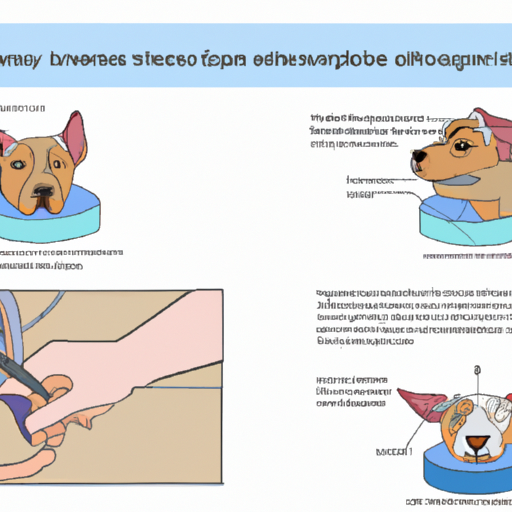Understanding Sebaceous Cysts
Sebaceous cysts, also known as epidermal cysts, are common skin conditions experienced by dogs. They form when the sebaceous glands, which produce the oily substance that coats your dog’s skin and hair, become blocked. As a caregiver, it’s crucial to understand that these cysts are usually benign, and although they may look concerning, they’re generally not a cause for major concern. It’s also worth noting that certain breeds, like Cocker Spaniels, are more prone to this condition.
Recognizing Sebaceous Cysts
To effectively treat sebaceous cysts, you first need to be able to identify them. They often appear as small, circular lumps beneath your dog’s skin. They may feel firm or squishy to the touch and are usually painless. Some cysts may rupture, releasing a cottage cheese-like discharge, which is simply the accumulated sebum.
Here are some key signs to look out for:
- Small, round, raised lumps on your dog’s skin
- The lump is firm or squishy
- The lump is not painful to your dog
- The cyst may occasionally rupture, releasing a cheesy discharge
Treating Sebaceous Cysts at Home
In some cases, sebaceous cysts can be managed at home. However, you should always consult with your vet before implementing any home treatments. Here are some steps you can take:
-
Warm Compress: Apply a warm compress to the cyst for 10-15 minutes, 2-3 times a day. This can help to soften the contents of the cyst and promote drainage.
-
Topical Treatments: Use a topical treatment, such as an antibacterial cream or ointment, to prevent infection.
-
Monitor the Cyst: Keep an eye on the cyst. If it increases in size, becomes painful, or if your dog seems unwell, contact your vet immediately.
When to Seek Veterinary Assistance
While home treatments can be effective, there are situations when professional veterinary assistance is necessary. If your dog’s cyst is large, painful, or infected, it will likely need to be surgically removed. Your vet may also recommend removal if the cyst is in a location that is causing your dog discomfort, like on a paw or near the eye.
| Indication | Action |
|---|---|
| Cyst grows larger | Consult a vet |
| Cyst becomes painful | Consult a vet |
| Cyst appears infected | Consult a vet |
| Cyst is causing discomfort due to its location | Consult a vet |
Preventing Sebaceous Cysts
While there’s no foolproof way to prevent sebaceous cysts, maintaining your dog’s overall health can help. Ensure your dog is eating a balanced diet, getting regular exercise, and has good grooming habits. Regular vet check-ups can also help catch any potential issues early.
FAQs
1. Are sebaceous cysts dangerous?
No, sebaceous cysts are generally not dangerous. They are typically benign and do not cause pain or discomfort to your dog.
2. Can I pop my dog’s cyst at home?
It is not recommended to try and pop or drain a cyst at home. This can lead to infection and other complications.
3. Do sebaceous cysts need to be removed?
Not always. Many cysts can be managed with home care. However, if the cyst becomes large, painful, or infected, it may need to be surgically removed.
4. What causes sebaceous cysts in dogs?
Sebaceous cysts form when the sebaceous glands in your dog’s skin become blocked. Some breeds, like Cocker Spaniels, are more prone to developing these cysts.
5. How can I prevent my dog from getting sebaceous cysts?
While there’s no surefire way to prevent sebaceous cysts, maintaining your dog’s overall health can help. This includes feeding them a balanced diet, ensuring they get regular exercise, and keeping up with good grooming habits.



